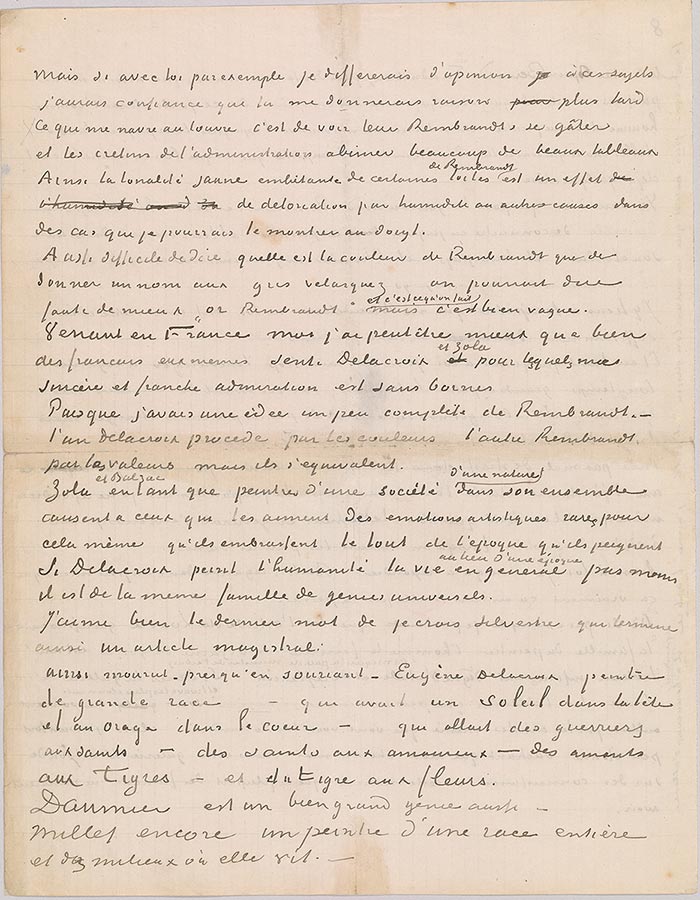
Vincent van Gogh, letter to Émile Bernard, Arles, 30 July 1888, Letter 13, page 2
Thaw Collection, given in honor of Charles E. Pierce, Jr., 2007
But if, for example, my opinion differed from yours on those subjects, I'm confident that you
would agree with me later. What grieves me at the Louvre is to see their Rembrandts getting spoiled
and the cretins in the administration damaging many beautiful paintings. Thus the annoying yellow
tonality of certain canvases by Rembrandt is an effect of deterioration through humidity or
other causes, instances of which I could point out to you.
As difficult to say what Rembrandt's color is as to give a name to the Velázquez grays; we could
say, for want of something better, "Rembrandt gold," and that's what we do, but that's quite vague.
Having come to France I have, perhaps better than many Frenchmen themselves, felt Delacroix
and Zola, for whom my sincere and frank admiration is boundless.
Since I had a fairly complete idea of Rembrandt. One, Delacroix, proceeds by way of colors,
the other, Rembrandt, by values, but they are on a par.
Zola and Balzac, as painters of a society, of reality as a whole, arouse rare artistic emotions in
those who love them, for the very reason that they embrace the whole epoch that they paint. When
Delacroix paints humanity, life in general instead of an epoch, he belongs to the same family of
universal geniuses all the same.
I love the closing words of Silvestre, I think it was, who ends a masterly article like this:
Thus died—almost smiling—Eugène Delacroix, a painter of high breeding—who had a sun
in his head and a thunderstorm in his heart—who went from warriors to saints—from saints to
lovers—from lovers to tigers—and from the tiger to flowers.
Daumier is also a really great genius.
Millet, another painter of an entire race and the settings in which it lives.
© 2007 Van Gogh Museum, Amsterdam
